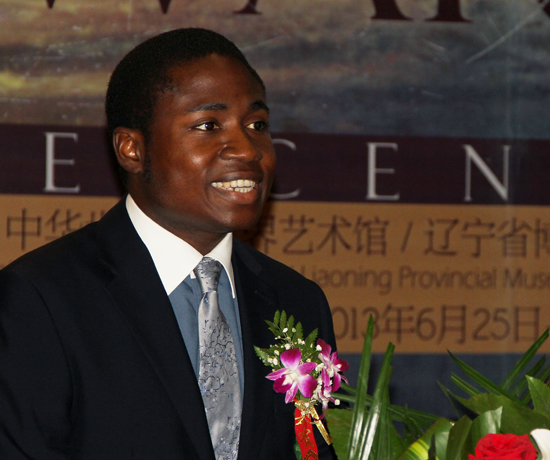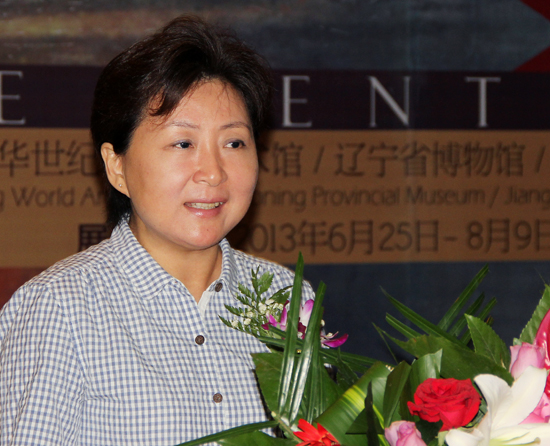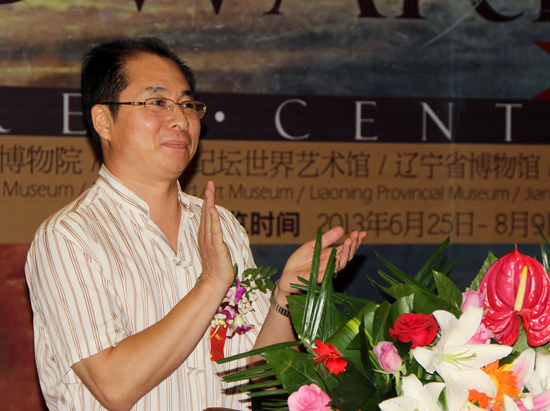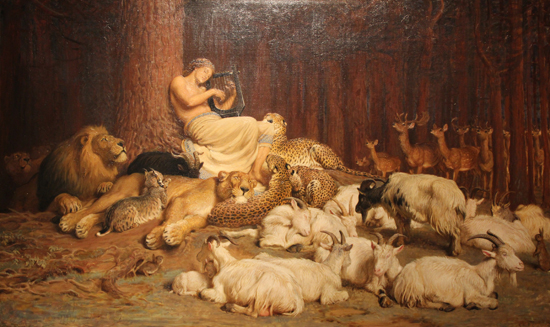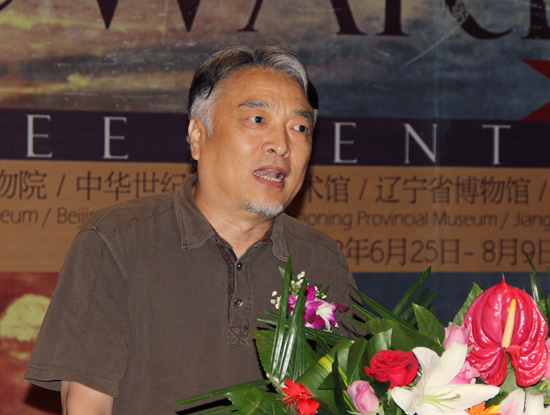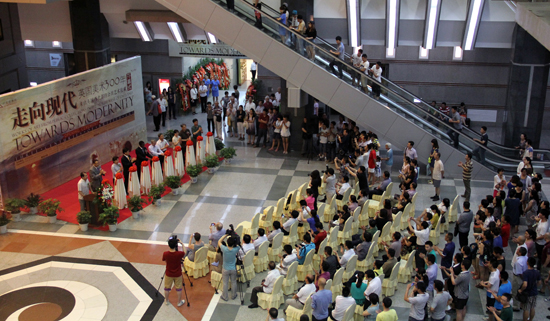
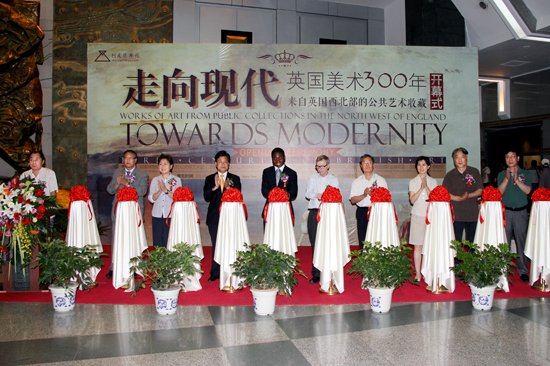
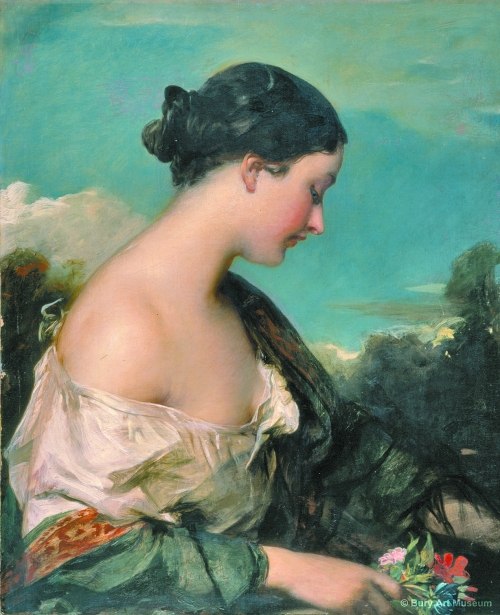
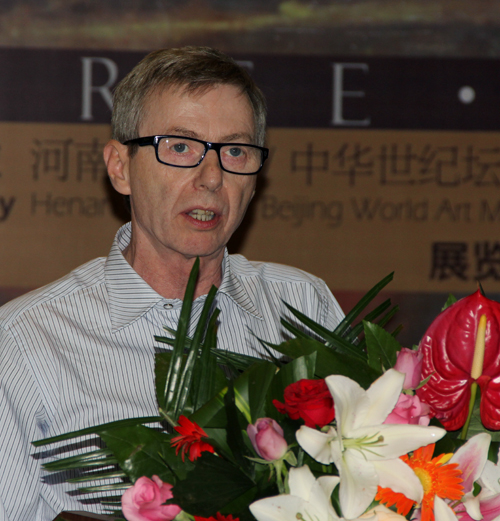
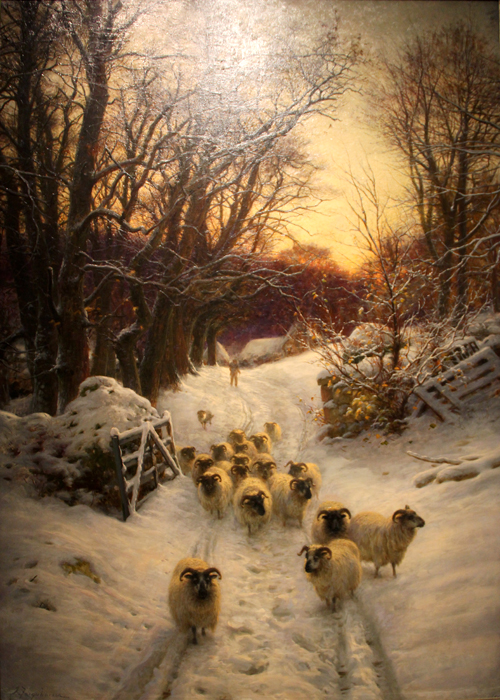
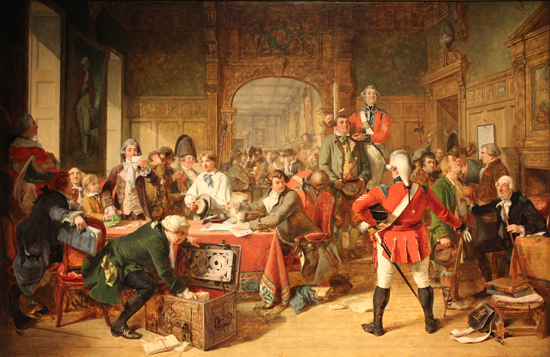
The exhibition of “Towards Modernity: Three Centuries of British Art” opens in Henan Museum on June 25, 2013.
Ms. Kangjie, the deputy director of the Department of Culture Henan Province, Mr. Guo Junfeng, the head of the Foreign Affairs Office of Henan Provincial Government, Mr.Wang Guan a general officer of the England Embassy in China, Mr. John Skali, the leader of the British Salford Art Gallery, the leader of Salford Museum and Berri Art Museum, Mr. Zhou Wei, the director of the China Millennium Monument Museum, Mr.Zhang Wenjun, the head of Henan Museum, and some other honored guests of the social from all walks of life attended the opening ceremony.
Totally the exhibition was jointly held by six internal museums and art galleries and other three foreign institutions and museums. They were Henan Museum, the China Millennium Monument Museum, Liaoning Museum, Jiangxi Museum, Guangdong Art Museum, Hunan Museum, British Salford Art Gallery, Berri Art Museum and International Itinerant Exhibition Alliance.
Mr.Zhang Wenjun, the head of Henan Museum made a first address to the opening ceremony. He introduced that the exhibition. It covered oil paintings, prints, watercolours, sketches and sculpture. Totally there were 80 pieces of art works. It was said that all the works came from 18 museums of Manchester in the North West of England.
The exhibit was formed by six units. They were the Physical Setting, Englishman, Observing the Scene, Telling Story, Poetic Imaginings and Modernism.
The art works on the exhibition covered two main aspects: modern and tradition. It showed the main stream and the venturing beyond traditional art works. Through the artist’s eyes, the works on the exhibition reappeared the outstanding age. It also showed the different art style about orient and west. At the same time, through the diversified forms and the rich content, Chinese visitors can enjoy much more special western art styles.
It was said that the art works all were the great pieces over 300 year’s history of England. The exhibition showed the industrial development, social change, and the art spirits sublimation. It continuous advanced the exchanges and cooperation of the culture and art between China and England. It also enhanced understanding each other and promoted joint development on both sides.
It will show in Beijing, Shenyang, Nanchang, Guangzhou, Zhengzhou and Changsha in order of precedence. Henan Museum is the fifth spot. Changsha Museum will be the last one.
It was side that the exhibition will last to Aug.9 in Henan Museum. The visitors can get into the museum freely.
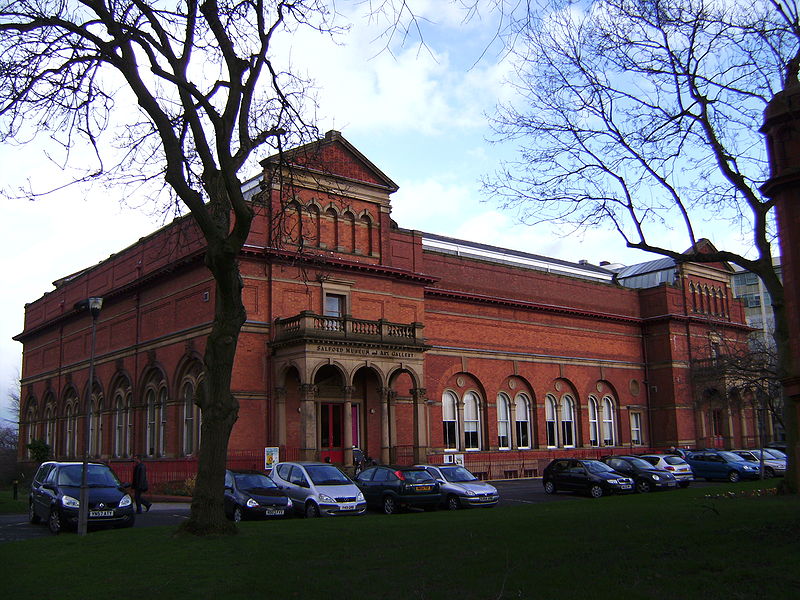
Background of Salford Museum and Art Gallery
Salford Museum and Art Gallery, in Peel Park, Salford, Greater Manchester, opened to the public in November 1850 as the Royal Museum and Public Library, was the first "unconditionally free" public library in the United Kingdom. The gallery and museum are devoted to the history of Salford and Victorian art and architecture.
Through the use of public subscriptions along with Queens Park and Phillips Park in Manchester the original site Lark Hill estate and mansion was purchased for its purpose to become the first Royal Museum and Public Library to open to the public in November 1850. The story begins by Edward Langworthy, former Mayor of Salford and early supporter of the museum, who died in 1874 leaving a £10,000 bequest to the museum. This bequest was used to build the west wing, named Langworthy Wing. This wing connected the north and south wings. The Langworthy wing was constructed over three storey and “was built of brick with stone dressing with a glass and Welch-slate roof, with a pediment gable.”In the present time it serves as the public entrance. Throughout the years the popularity of the museum significantly increased and it was in 1936 that the original site Lark Hill Mansion was found to be unsound and due to structural instability was demolished. Two years was required for the new wing, which was designed in the same fashion as the Langworthy Wing to be completed and opened in 1938. The decision to “echo the Langworthy Wing in the 1930s is remarkable in the architectural climate of the time and it is tempting to argue that Walker’s addition is the first Victorian revival building in the country. “ The building development was a gradual evolution which was commenced by different architects evolving their ideas at different times. Throughout its development the building has achieved “a degree of architectural consistency as a result of nearly a century of evolution.”Since it was open more than 160,000 visitors was attracted to the museum in its first year to explore casts of antique statues, collection of paintings, Egyptian and Oriental antiques and other significant objects and exhibitions.The number of visitors steadily, largely, and year by year, increased. In five years time the visitors has rapidly reached an averaging visitors count of 1.6 million.
Artistic values[edit]The Salford Museum and Art Gallery fascinates with masonry pillars and detailed masonry elements both outside and within the interior. What is most important is how the aesthetic design of the building evolved over a 200-year life cycle and produced a unified structure nowadays. Important architectural examples are the top-lit galleries in the north and south wings, which are one of the earliest examples of their type. The galleries were built in a Renaissance style; the architects, Travis & Mangnall, "were key local exponents of a gracious Italianate style which had already from the 1840s become a characteristic of commercial architecture, especially in Manchester".
Landscape values[edit]The building is located in the heart of the University of Salford, surrounded by civic and educational buildings. It plays a significant role for its relationship with the Peel building to the west and the Peel Park to the north. The building is accepted as the earliest civic building that has influenced the location of other civic buildings in the Crescent area.
England is a country that is part of the United Kingdom. It shares land borders with Scotland to the north and Wales to the west. The Irish Sea lies north west of England, whilst the Celtic Sea lies to the south west. The North Sea to the east and the English Channel to the south separate it from continental Europe. Most of England comprises the central and southern part of the island of Great Britain which lies in the North Atlantic. The country also includes over 100 smaller islands such as the Isles of Scilly, and the Isle of Wight.
The area now called England was first inhabited by modern humans during the Upper Palaeolithic period, but it takes its name from the Angles, one of the Germanic tribes who settled during the 5th and 6th centuries. England became a unified state in 927 AD, and since the Age of Discovery, which began during the 15th century, has had a significant cultural and legal impact on the wider world.The English language, the Anglican Church, and English law - the basis for the common law legal systems of many other countries around the world - developed in England, and the country's parliamentary system of government has been widely adopted by other nations.The Industrial Revolution began in 18th-century England, transforming its society into the world's first industrialised nation.
England's terrain mostly comprises low hills and plains, especially in central and southern England. However, there are uplands in the north (for example, the mountainous Lake District, Pennines, and Yorkshire Dales) and in the south west (for example, Dartmoor and the Cotswolds). The former capital of England was Winchester until replaced by London in 1066. Today London is the largest metropolitan area in the United Kingdom and the largest urban zone in the European Union by most measures.England's population is about 53 million, around 84% of the population of the United Kingdom, and is largely concentrated in London, the South East and conurbations in the Midlands, the North West, the North East and Yorkshire, which each developed as major industrial regions during the 19th century. The Kingdom of England - which after 1284 included Wales - was a sovereign state until 1 May 1707, when the Acts of Union put into effect the terms agreed in the Treaty of Union the previous year, resulting in a political union with the Kingdom of Scotland to create the new Kingdom of Great Britain. In 1801, Great Britain was united with the Kingdom of Ireland through another Act of Union to become the United Kingdom of Great Britain and Ireland. In 1922, the Irish Free State was established as a separate dominion, but the Royal and Parliamentary Titles Act 1927 reincorporated into the kingdom six Irish counties to officially create the current United Kingdom of Great Britain and Northern Ireland.

